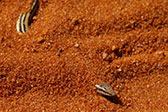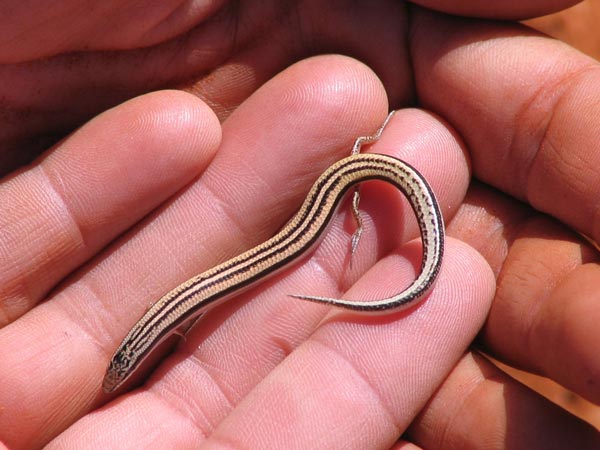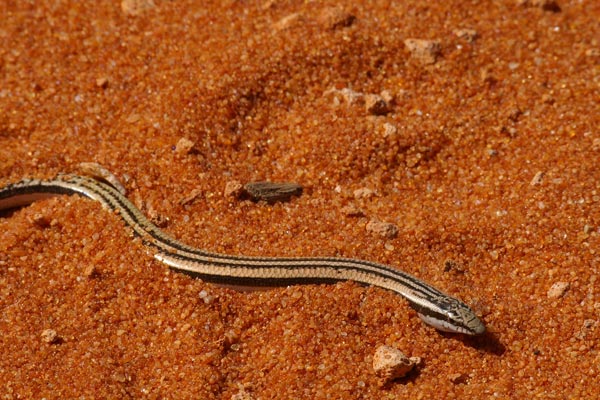



When it came time to identify the species, I ran into trouble. The skink is clearly some species in the genus Lerista, so I read up on all the possible candidates in that genus. The trouble was that none of the ones that lived in this area had a pattern very close to this one, and the ones that had any vaguely similar pattern had a mismatching leg or toe count. Unfortunately, I didn't realize the importance of the toe count, and the pictures are not completely clear about this. The skink I photographed has at least one toe on each front foot, but I have no photos that show conclusively that there is exactly one. And the skink I photographed has either two or three toes on each back foot; I'm reasonably certain it's three, but not completely certain.
After reconsidering every Lerista species listed in Wilson & Swan and Cogger, the closest match seemed to be Lerista lineata. The pattern seems to be a perfect match (really the only Lerista species about which this can be said), and Lerista lineata has two toes on each front foot and three toes on each back foot. Herpetologist Steve Wilson (coathor of Wilson & Swan) concurred in email that this seemed like a reasonable identification given the available evidence.
However, Lerista lineata is not known to occur on the Peron Peninsula. The closest known sightings are from Woodleigh Station, just east of the peninsula. This led me to believe that my sighting might be a significant range extension, and I wrote up an article for the Western Australia Naturalist journal about the sighting. However, the referees for the journal believed that the lizard is almost certainly Lerista planiventralis rather than Lerista lineata, and they certainly know far more about identifying Lerista than I do. So L. planiventralis it is.
Here is a complete list of the reptiles and frogs I saw on this trip to Western Australia.
- Bush, B., Maryan, B., Browne-Cooper, R., Robinson, D. 1995. A Guide to the Reptiles and Frogs of the Perth Region
- Cogger, H. G. 2014. Reptiles & Amphibians of Australia, Seventh Edition
- Wilson, S. K., Knowles, D. 1988. Australia's Reptiles: A Photographic Reference to the Terrestrial Reptiles of Australia
- Wilson, S. and Swan, G. 2003. Reptiles of Australia